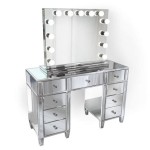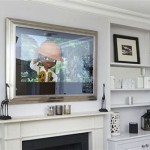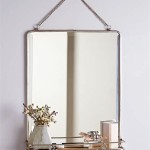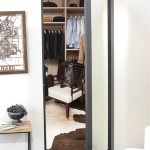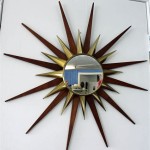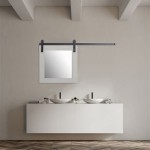Do You Need a Vanity Light with a Lighted Mirror?
Bathroom lighting is a crucial element of both functionality and aesthetics. Choosing between a separate vanity light and a lighted mirror often presents a design dilemma. This article explores the advantages and disadvantages of each option, helping readers determine the optimal lighting solution for their individual needs.
Advantages of a Separate Vanity Light
Traditional vanity lights, mounted above or flanking the mirror, offer several benefits:
- Design Versatility: Vanity lights are available in a vast array of styles, finishes, and sizes, allowing for greater customization and coordination with existing bathroom decor.
- Even Illumination: Properly positioned vanity lights provide broader, more balanced lighting across the entire bathroom space, minimizing shadows and enhancing visibility.
- Ease of Replacement: Replacing a standard vanity light fixture is a relatively straightforward process, offering flexibility for future updates and repairs.
- Cost-Effectiveness: Traditional vanity lights are often less expensive than integrated lighted mirrors, particularly when considering intricate designs and advanced features.
Disadvantages of a Separate Vanity Light
While offering advantages, separate vanity lights also present some potential drawbacks:
- Potential for Shadows: Depending on placement and the user's position, vanity lights can sometimes cast shadows on the face, making grooming tasks more difficult.
- Space Constraints: In smaller bathrooms, separate vanity lights can feel bulky and take up valuable wall space.
- Installation Complexity: While replacement is generally easy, initial installation might require professional electrical work.
Advantages of a Lighted Mirror
Lighted mirrors, increasingly popular in modern bathroom design, provide unique benefits:
- Targeted Illumination: Lighted mirrors provide direct, focused light onto the face, eliminating shadows and providing optimal visibility for grooming.
- Space-Saving Design: Integrating the light source into the mirror itself frees up valuable wall space and creates a cleaner, more streamlined look.
- Built-in Functionality: Many lighted mirrors now incorporate features like defoggers, dimming capabilities, and even integrated Bluetooth speakers, enhancing convenience and functionality.
- Modern Aesthetic: Lighted mirrors often contribute to a contemporary, sleek aesthetic, updating the overall bathroom design.
Disadvantages of a Lighted Mirror
Despite their advantages, lighted mirrors also have certain limitations:
- Limited Ambient Lighting: Lighted mirrors primarily focus light on the face, potentially leaving the rest of the bathroom inadequately illuminated.
- Higher Cost: Lighted mirrors, especially those with advanced features, can be significantly more expensive than traditional vanity lights.
- Repair and Replacement: Repairing or replacing a lighted mirror is often more complex and costly than replacing a standard vanity light.
- Style Limitations: While the variety of lighted mirrors is increasing, they might not offer the same breadth of design options as separate vanity lights.
Combining Vanity Lights and Lighted Mirrors
For optimal lighting, consider combining both vanity lights and a lighted mirror. This approach leverages the advantages of each option, providing both ambient illumination and targeted task lighting. The vanity lights provide overall bathroom lighting, minimizing shadows and enhancing visibility throughout the space. The lighted mirror supplements this with focused light for grooming tasks, ensuring optimal clarity and precision.
Factors to Consider When Choosing
Several factors should influence the decision between separate vanity lights, a lighted mirror, or a combination of both:
- Bathroom Size: In smaller bathrooms, a lighted mirror can save valuable space, while larger bathrooms may benefit from the broader illumination of separate vanity lights.
- Budget: Consider the cost difference between traditional vanity lights and lighted mirrors, including installation and potential repairs.
- Desired Aesthetic: Choose lighting that complements the overall bathroom design and creates the desired atmosphere.
- Personal Preferences: Ultimately, the best lighting solution depends on individual needs and preferences regarding brightness, functionality, and style.
Placement and Installation
Proper placement and installation are crucial for effective bathroom lighting. Vanity lights should be positioned to minimize shadows and provide even illumination across the vanity area. Lighted mirrors should be installed at a height appropriate for the user, ensuring comfortable and convenient usage. Consulting with a qualified electrician is recommended for complex installations and to ensure compliance with building codes.
Maintenance and Care
Regular maintenance can prolong the lifespan of bathroom lighting fixtures. Clean vanity lights and lighted mirrors periodically to remove dust and debris, using appropriate cleaning solutions for the specific materials. Replace bulbs promptly to maintain optimal brightness and efficiency. Address any malfunctions or damage immediately to prevent further issues.

Do You Need A Vanity Light With Lighted Mirror Ledmyplace

Backlit Vs Lighted Mirrors What S The Difference Ledmyplace

Best Lighted Bathroom Mirrors To Buy In 2024

How Do I Choose A Lighted Bathroom Mirror Ledmyplace

Are Bathroom Led Mirrors Good For Applying Makeup
Guide How To Choose An Led Mirror Roomhints

Importance Of Bathroom Vanity Lighting

How To Pick A Modern Bathroom Mirror With Lights

Lighted Mirrors By Electric Mirror For Hospitality Commercial Use

Should Vanity Lights Hang Over Mirrors Ehomemart

